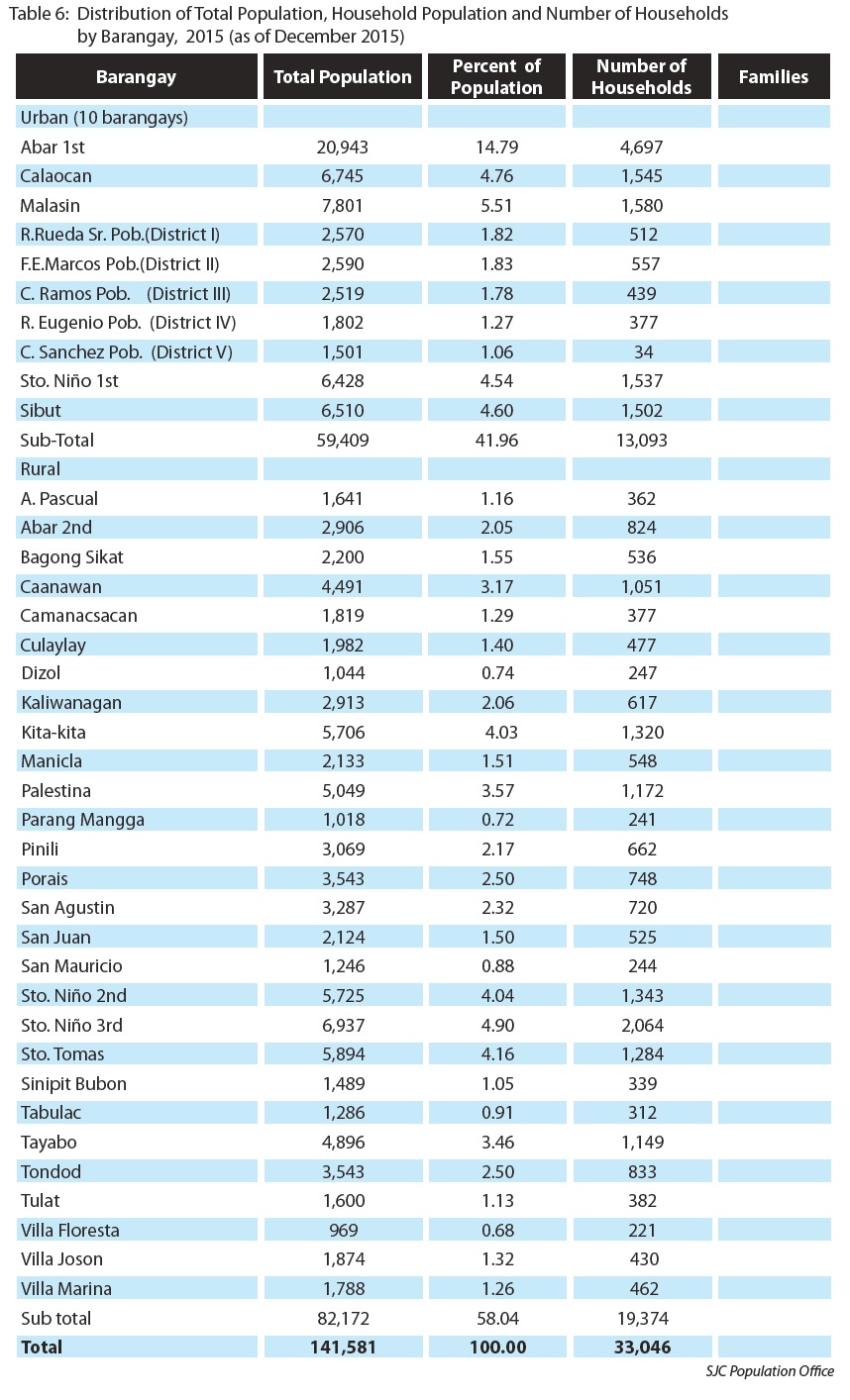Population Size, Growth Rate and Distribution »
Urban-Rural Distribution
Published: December 30, 2015 12:00 AM
The City of San Jose has a total population of 141,581 as of December 2015, based on the update conducted by the City Population Office. Among the barangays in San Jose, the most populated is Abar 1st contributing with a total population of 20,943 or 14.9% to the total city population. Other significantly populated areas are Barangays Malasin, 7,801 or 5.5%, Sto. Nino 3rd 6,937 or 4.89%, Barangay Calaocan, 6,745 or 4.76% , Barangay Sibut, 6,510 or 4.59%, and Barangay Sto. Niño 1st 6,428 or 4.54% to the total city population.
On the other hand, the least populous barangays are dominated by Barangays Villa Floresta, with a population of 969 (0.68%), Parang Mangga, 1,018 (0.71%), Dizol 1,104 (0.73), San Mauricio 1,246 (0.88%) and Tabulac 1,286 (0.90%). These are rural barangays and this data is expected because urban barangays are more populated than the rural barangays.
Approximately, of the 141,581 total population 59,409 or 41.96% of the city’s population is concentrated in its ten urban barangays while the rest of 82,172 or 58.04% dwells on rural areas. This shows that the population of San Jose City is evenly distributed. However, in terms of land-man ratio, urban area dominates the rural zones of the city.

